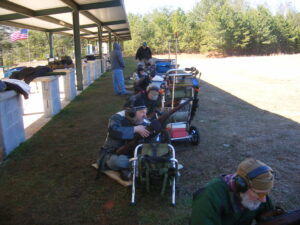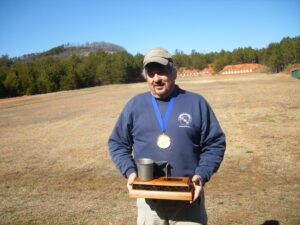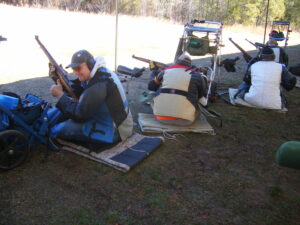Rifle Range
The Polk County Gun Club hosts a rifle range with three distances: 100, 200, and 300 yards (R to L). Our members practice various rifle disciplines, and our club hosts various competitions throughout the year.
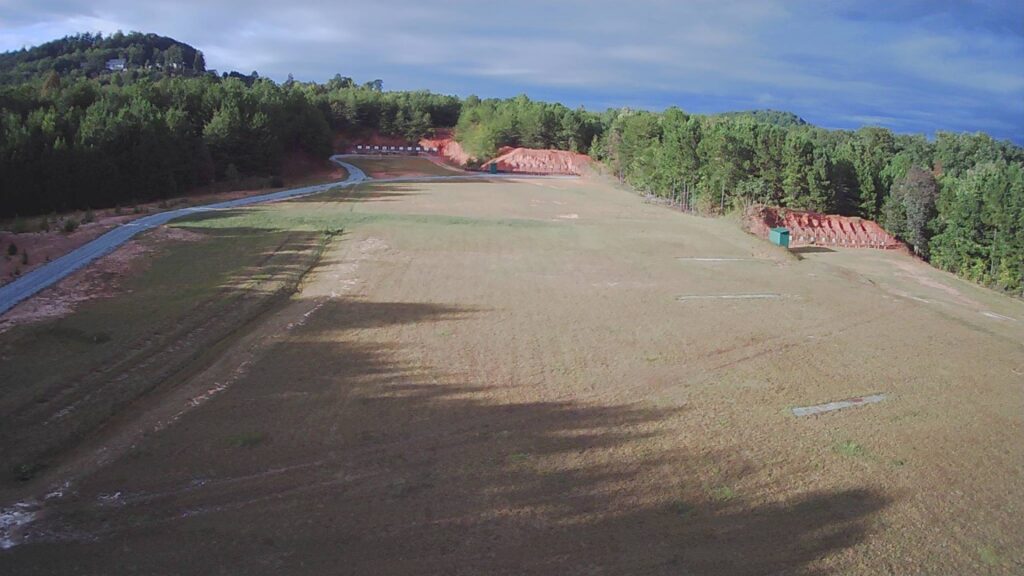
NRA High Power Rifle
NRA High Power Rifle at PCGC
Polk County Gun Club holds High Power Rifle Matches throughout the year embracing both NRA (National Rifle Association) and CMP (Civilian Marksmanship Program) Rules. The “rules” are similar but sometimes have slight differences. These matches are typically held on the third Saturday in the months they are held.
The High Power Rifle “Season” begins with NRA-Sanctioned Tournaments beginning in April and lasts through September for a total of 6 tournaments. These tournaments are 80 shots for record with sighters. CMP-Sanctioned Garand Springfield Modern (GSM) Tournaments begin in October and last through January of the following year. GSM Tournaments consist of a total 4 tournaments, 30 shots for record with sighters.
The High Power Rifle Season ends in February with the “Frozen Chosin” Korean War Commemorative Tournament. To compete in this tournament, the rifle design must pre-date 1954. If a participant wishes to compete with a rifle post-dating 1953, it is permissible; however, the contestant is not eligible to have their name and score engraved in the coveted canteen cup trophy.
About NRA High Power Rifle
Every NRA High Power Rifle tournament for which classification records are kept is a multiple or a combination of slow fire, and rapid fire strings, shot from standing, sitting/kneeling, and prone positions. The popular National Match Course, for instance, consists of 20 rounds slow fire standing; 20 rounds rapid fire sitting or kneeling; 20 rounds rapid fire prone and 20 rounds slow fire prone. Matches fired all at one distance and in one position are known as "single-stage" matches and are usually 20 shot matches (2 times one of the basic strings). Some clubs conduct tournaments with lesser round count usually 50 rounds.
"Slow Fire" does not require much explanation. The shooter takes his position on the firing line, assumes the prescribed position and is allowed one minute per shot to fire the string. Slow fire is shot standing or prone. 200 yards standing (SR target), 300/600 yards (MR-63 reduced target) or 600 yards (MR target).
"Rapid Fire," on the other hand, is more elaborate. In rapid fire sitting or kneeling, the shooter uses a preparation period to establish sitting or kneeling position; The shooter starts out in position with an unloaded firearm, their magazines are laying on the ground or stool, when the targets appear or the command to “targets” is given, the shooter loads his firearm and commences firing the rifle, loads with 2 and 8 or 2 strings of 5 (if a bolt gun) for a total of 10 and finishes the string. The procedure for rapid fire sitting or prone differs only in the firing position and the time spent shooting. 60 seconds sitting, 70 seconds prone.
Equipment
Rifle: Rifles to be used in High Power Rifle competition must be equipped with either metallic sights or a 1-4.5x25mm scope, should be capable of holding at least 5 rounds of ammunition and should be adapted to rapid reloading. Tournament programs often group competitions into two divisions, Service Rifle and Match Rifle. The rifles currently defined as "Service Rifles" include the M1, M14, M16 and their commercial equivalents. Winchester and Remington have made their Model 70 and Model 40X rifles in "match" versions and custom gunsmiths have made up match rifles on many military and commercial actions. 1903 and 1903-A3 Springfield, 1917 Enfields and pre-war Winchester Model 70 sporters in .30-06 are all equipped with clip slots for rapid reloading. The most suitable rear sights are aperture or "peep" with reliable, repeatable 1/2 minute (or finer) adjustments. Front sights should be of either the post or aperture type.
Sling: The shooting sling is helpful in steadying the positions and controlling recoil. The sling may be used in any position except standing.
Spotting Scope: A spotting scope or a substitute optical device is important for scoring and observing the placement of shot spotters on the target. The beginning shooter will benefit from the use of about any telescope which gives an erect image. The most suitable spotting scopes, however, have a magnification of from 20 to 25 power and an objective lens at least 50mm in diameter. Eyepieces angled at 45 to 90 degrees are convenient for using the scope without disturbing the shooting position.
Shooting Coat: The shooting coat is equipped with elbow, shoulder and sling pads which contribute to the shooter's comfort. Since there are several styles of shooting coats of varying cost, the shooter is advised to try out several types before making an investment.
Shooting Glove: The shooting glove's primary function is to protect the forward hand from the pressure of the sling. Any heavy glove will serve the purpose until the shooter makes a final choice among several shooting gloves available.
Sight Blackener: The shooter using metallic exposed front sight such as the blade found on the service rifle will require some means of blackening the sight. A carbide lamp will do this job or a commercial sight black sold in spray cans can be used.
In recent years the electronic scoring of targets has evolved to the point it is reliable and accurate, for clubs using this medium for scoring an electronic tablet is used. It is best for the competitor to equip themselves with an electronic tablet with sufficient battery life to last ~3 hours of use.
Score book: If the shooter is to learn from experience, they should record the conditions and circumstances involved in firing each shot. Sight settings, sling adjustments, wind and light conditions and ammunition used all have a place in the score book. Actual shot value is the least important data recorded.
Ammunition: Most competitors eventually turn to hand-loads. Careful hand-loading will yield ammunition less expensive and more accurate than otherwise available. Both tracer and incendiary ammunition are prohibited by NRA Rules and armor-piercing ammunition may be prohibited by local range regulations. Remember, there will sighting shots allowed so bring enough ammunition for the course of fire plus at least 10 extra rounds for sighters and 10 extra rounds in the event of a “re-fire” if your firearm malfunctions during a rapid fire stage.
Benchrest Rifle
[under construction]
F-Class Rifle
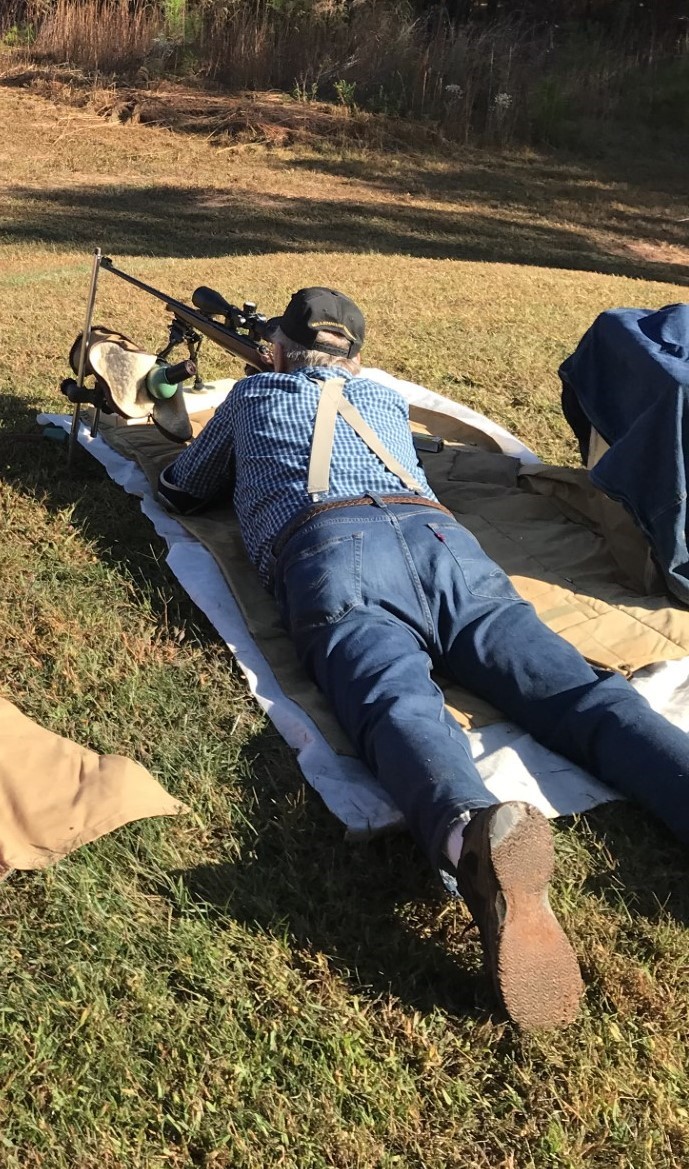
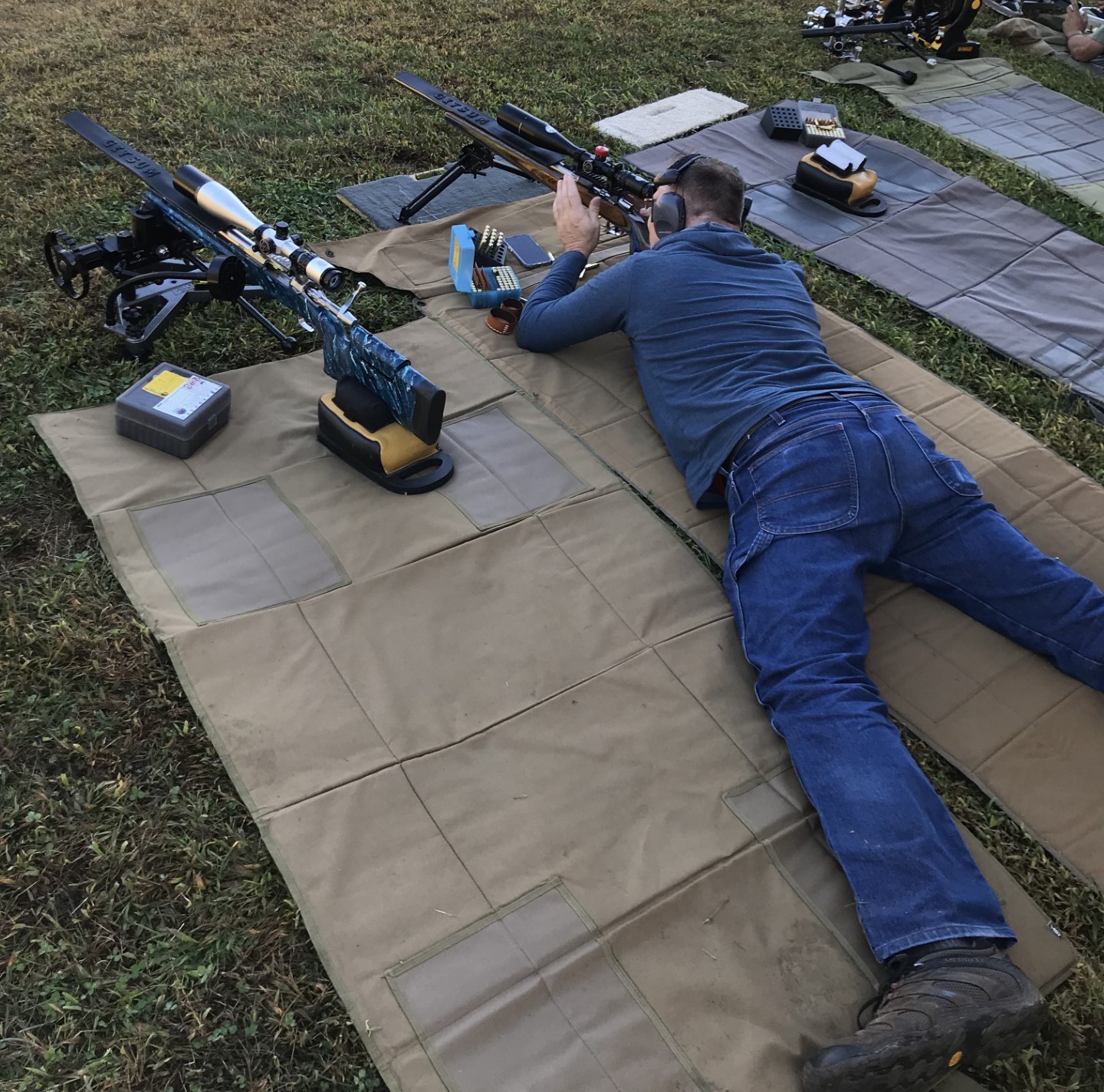
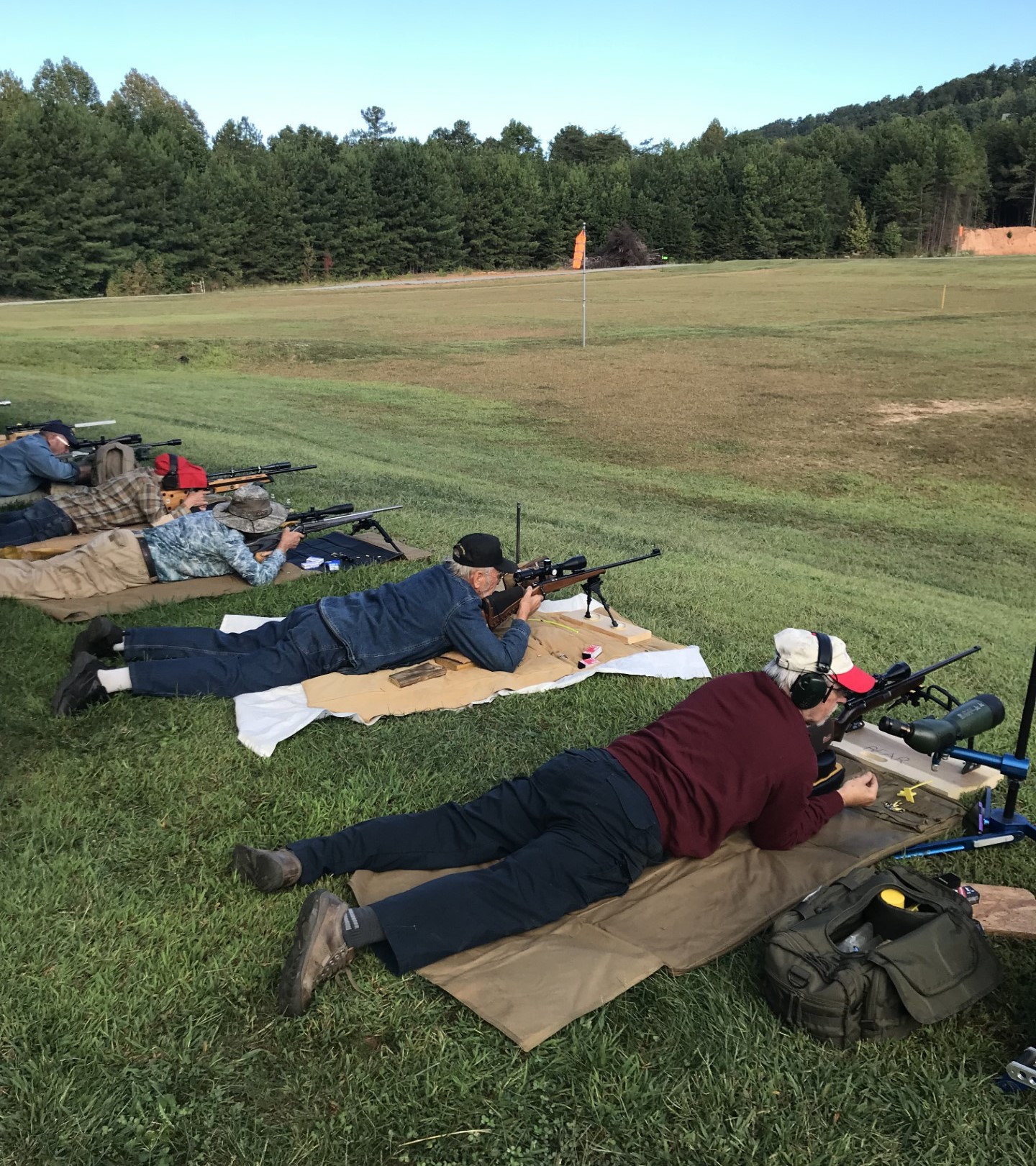
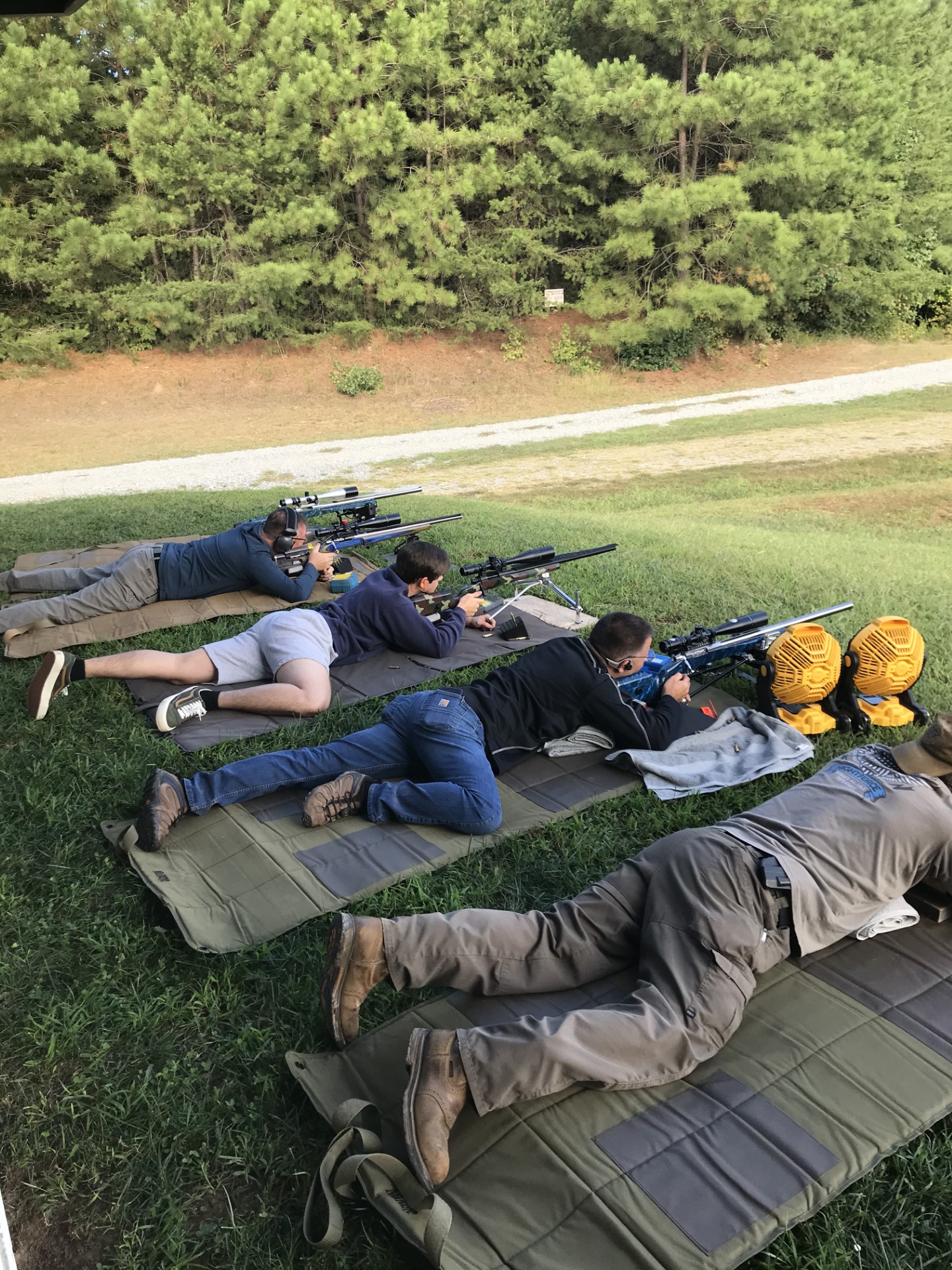
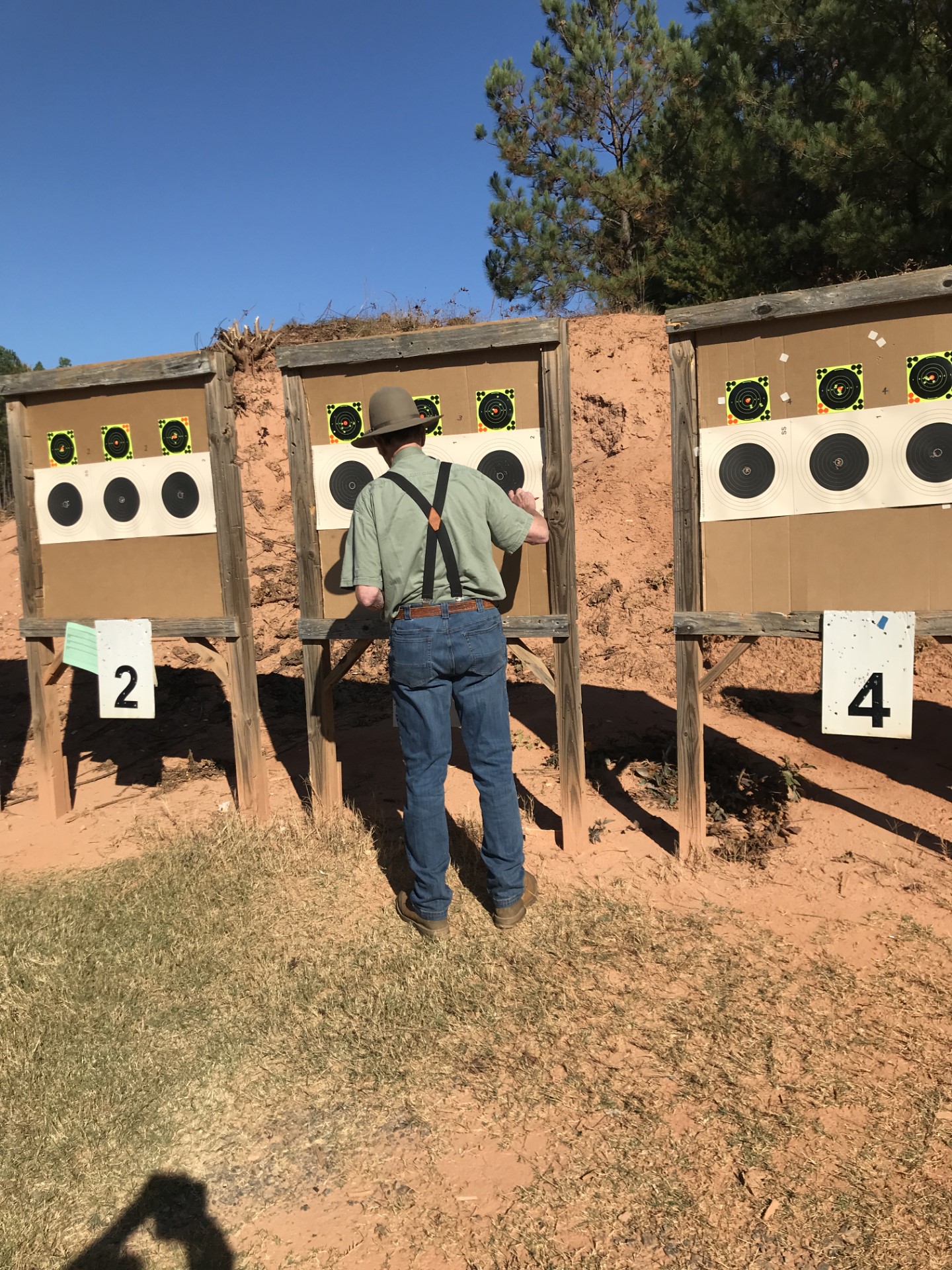
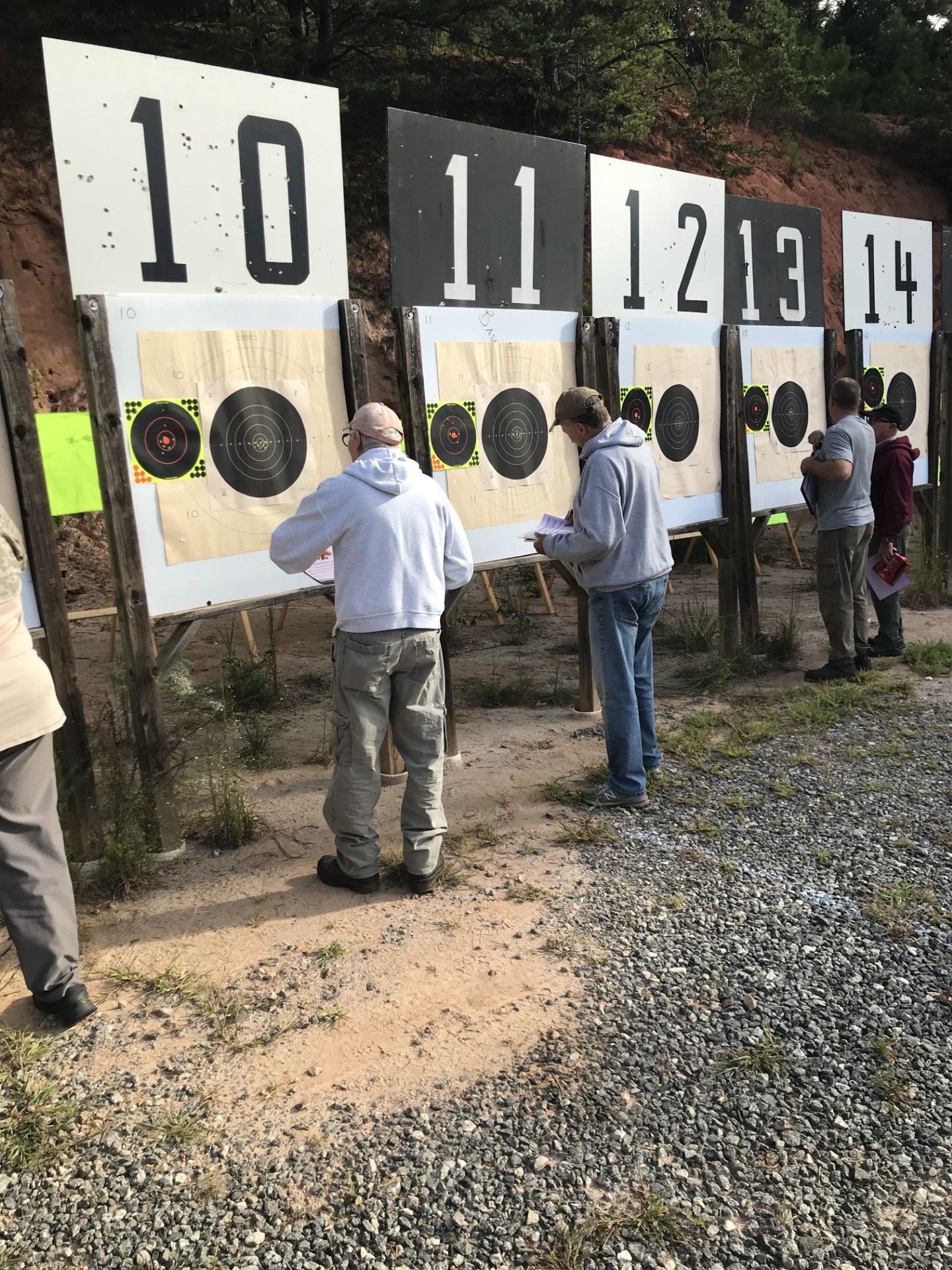
F-Class Rifle at PCGC
Since 2015, Polk County Gun Club (PCGC) has hosted monthly NRA-approved F-Class rifle tournaments. “F-Class” is a long-range, precision rifle competition in which competitors shoot from the prone position using (unattached) front and rear rests. Scores are forwarded to the NRA, and qualified competitors receive NRA classifications (Marksman, Sharpshooter, Master, High Master).
F-Class tournaments at PCGC offer both high-power and small bore competition. High-power shooters engage 300-yard targets from positions at one end of the firing line, while small bore shooters engage 100-yard targets from positions at the other end of the firing line. High-power competitors shoot at the NRA 300-yard F-Center target. Small bore competitors shoot at the NRA A-33 target.
PCGC F-Class tournaments are held on the fourth Saturday of the month from April through October. Tournaments begin with a safety briefing at 0900. The first shot downrange is at about 0910. The award ceremony – the final event in the tournament - typically is completed by about 1145.
PCGC F-Class tournaments consist of three consecutive matches (twenty record shots per match), for a total of sixty shots for record. (Competitors are welcome to shoot only one or two of the three matches but are encouraged to shoot all three to compete for aggregate awards.)
Each match is shot in a “block time” of 26 minutes, which provides time for both sighter shots and the twenty record shots. For sighter shots, a Shoot-N-C sighter target is placed adjacent to the record target. Competitors may shoot “sighter” shots into the sighter target at any time during the match.
Targets are scored by “walk up and paste” after each match. Between matches, high-power competitors score and change the F-Center target in preparation for the next match. Small bore competitors score after each match but leave the target on the frame to shoot consecutively at the three bulls on the NRA A-33 target.
Tournaments are administered by the match director at the PCGC 300-yd range. Competitors should plan to arrive no later than 0830 on the date of the match to sign in and place equipment on the firing line. PCGC has twenty positions for high-power competitors and ten positions for small bore competitors. Since PCGC F-Class tournaments feature only one relay, prospective competitors are advised to contact the match director in advance of the tournament to reserve a place.
For additional information or pre-registration, contact F-Class Match Director Dan Henk at: henkdan@hotmail.com or phone: (828) 440-1029.
F-Class Equipment Rules at PCGC
High Power F-Class
High-power F-Class at PCGC is shot at 300 yards (3/300 format). A tournament offers three consecutive 20-round matches for a total of 60 record shots and a potential high score of 600/60X. (Unlimited sighter shots are permitted during the 26-minute bloc time of each match.)
High power F-Class has two distinct official subclasses and a local category:
F-Target Rifle (or FTR) is limited to calibers 7.62x51mm (.308 Winchester) and 5.56mm (.223 Remington). Rifles in this category have a weight limit of 18.18 lbs (with all permanent attachments), use a bipod for the front rest and a bag for the rear rest. (Any good tactical rifle within the weight limit could be a serious competitor in this subclass.)
F-Open (FO) may include any caliber with a bore size of .32 or less, although most competitors at PCGC shoot the 6BR cartridge or something similar. Rifles in this category have a weight limit of 22.0 lbs (with all permanent attachments). They are fired off a front rest with an (unattached) rear bag.
Novice. Although not an official NRA-sanctioned subclass, at Polk County Gun Club, individuals participating in F-Class competition for the first time may choose to compete as Novice shooters. The registration fee is waived and the competitor is eligible to compete for a first place Novice award. Coaching is permitted for Novice shooters and scores are not submitted to the NRA.
Most high-power F-Class rifles on the PCGC firing line resemble heavy varmint or benchrest rifles, and many are built with single-shot bench-rest actions. Some competitors have shot very well using rifles with Savage and Remington factory actions. F-Class high power rifles at PCGC generally are equipped with scopes in the 25-55 power range.
In each monthly tournament, PCGC presents aggregate shooting awards to first, second, and third place winners in each of the two subclasses.
Small Bore F-Class
Small bore F-Class at PCGC is shot at 100 yards (on the NRA A-33 target). A tournament offers three consecutive 20-round matches for a total of 60 record shots and a potential high score of 600. (The A-33 target does not have an X-ring.) Unlimited sighter shots are permitted during the 26-minute bloc time of each match.
In the NRA rules, small bore F-Class does not have meaningful subclasses. Calibre is limited to .22 LR and the weight of rifles with all attachments cannot exceed 18.18 lbs. However, PCGC has divided its small bore F-Class competition into three distinct subclasses in order to encourage participation:
Small bore Heavy includes any rifle with a weight above 11.5 lbs (with all permanent attachments) up to the NRA limit of 18.18 lbs. There is no limit on scope power. The rifle may be shot off a bipod or a front rest, both with a rear bag.
Small bore Light includes any rifle with a weight up to 11.5 lbs (with all permanent attachments). There is no limit on scope power. The rifle may be shot off a bipod or a front rest, both with a rear bag. Rifles in this category may also compete as “Heavy,” if declared as such at the start of the match.
Small bore Sporter is restricted to a weight limit of 7.5 lbs (with all permanent attachments) and a scope power of 6X or less. It may be shot off a bipod or a front rest, both with a rear bag.
Novice. Although not a formal NRA or PCGC subclass, individuals participating in F-Class competition for the first time may choose to compete as Novice shooters. The registration fee is waived and the shooter is eligible to compete for a first-place Novice award. Coaching is permitted for Novice shooters and scores are not submitted to the NRA.
Military Training Rifles. Rifles in caliber .22 LR issued as “training rifles” to security forces prior to 1970 (including firearms such as the Springfield M-22, German DSM-34, Mossberg M-44, MAS-45, Lee Enfield No. 7 and Romanian Cougir) are counted as “Light” small bore rifles regardless of weight. No limit on scope power.
In each monthly tournament, PCGC offers aggregate shooting awards to first, second, and third place winners in each of the three small bore subclasses.
At PCGC, the F-Class small bore program specifically is intended to draw in casual shooters and junior shooters that do not have the sophisticated equipment used by most of the high-power F-Class competitors. Just about anyone with a reasonably accurate .22 should be able to install a 6X scope, find a simple front rest along with a rear bag, and compete.
Small bore F-Class competitors at PCGC may choose not to have their scores submitted to the NRA.
Seasonal Aggregate Awards
In addition to the awards for monthly aggregate high scores (first, second and third in each subclass), PCGC also recognises top scorers for excellence in shooting over an entire annual shooting season.
First, second and third place seasonal aggregate awards are given in each subclass, both high power and small bore. These awards are based on a competitor’s three best monthly aggregates. Since PCGC hosts seven tournaments in an F-Class shooting season, there is opportunity for competitors to compete for seasonal aggregate awards in two different subclasses.
NRA Light Rifle
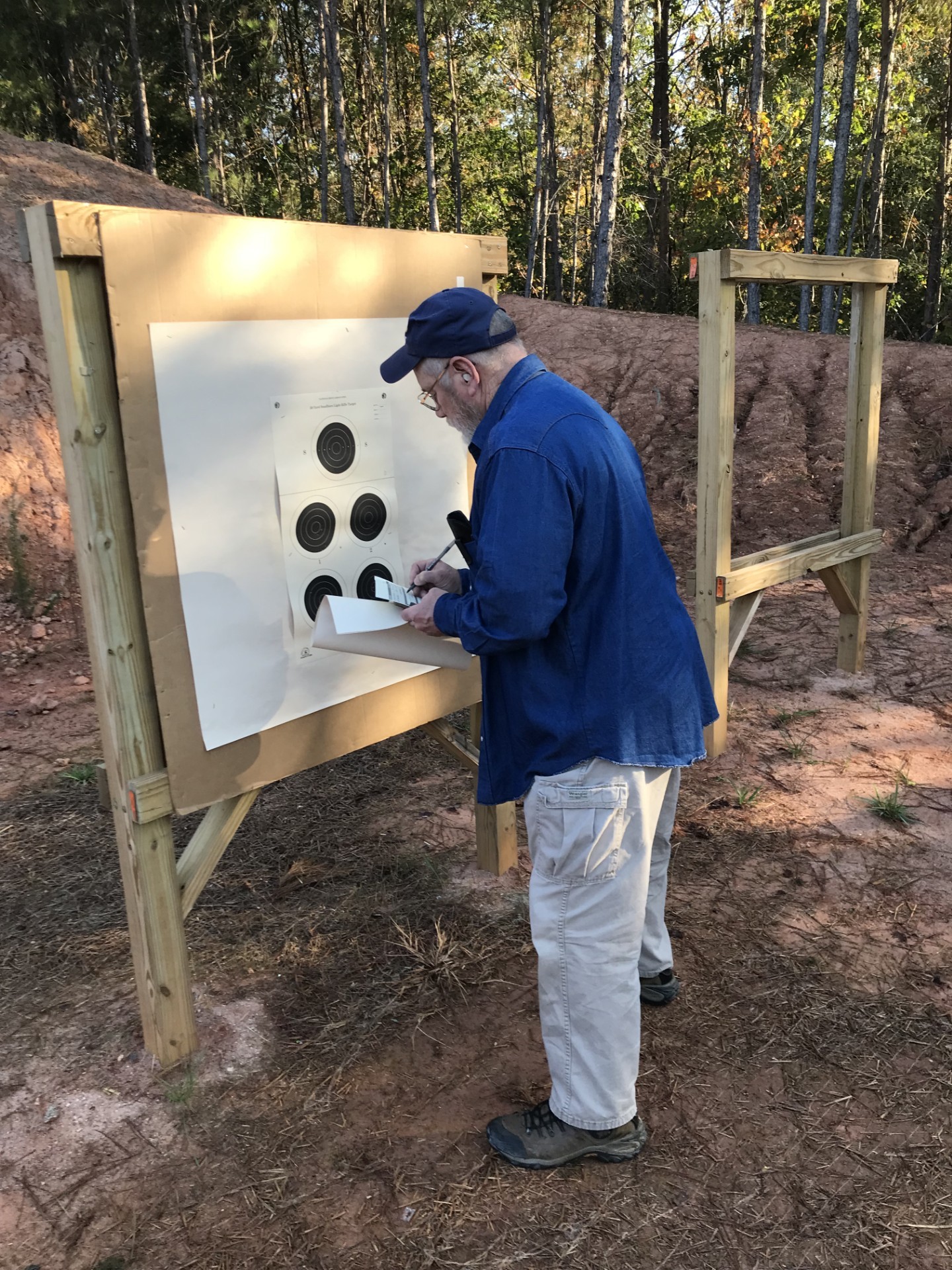
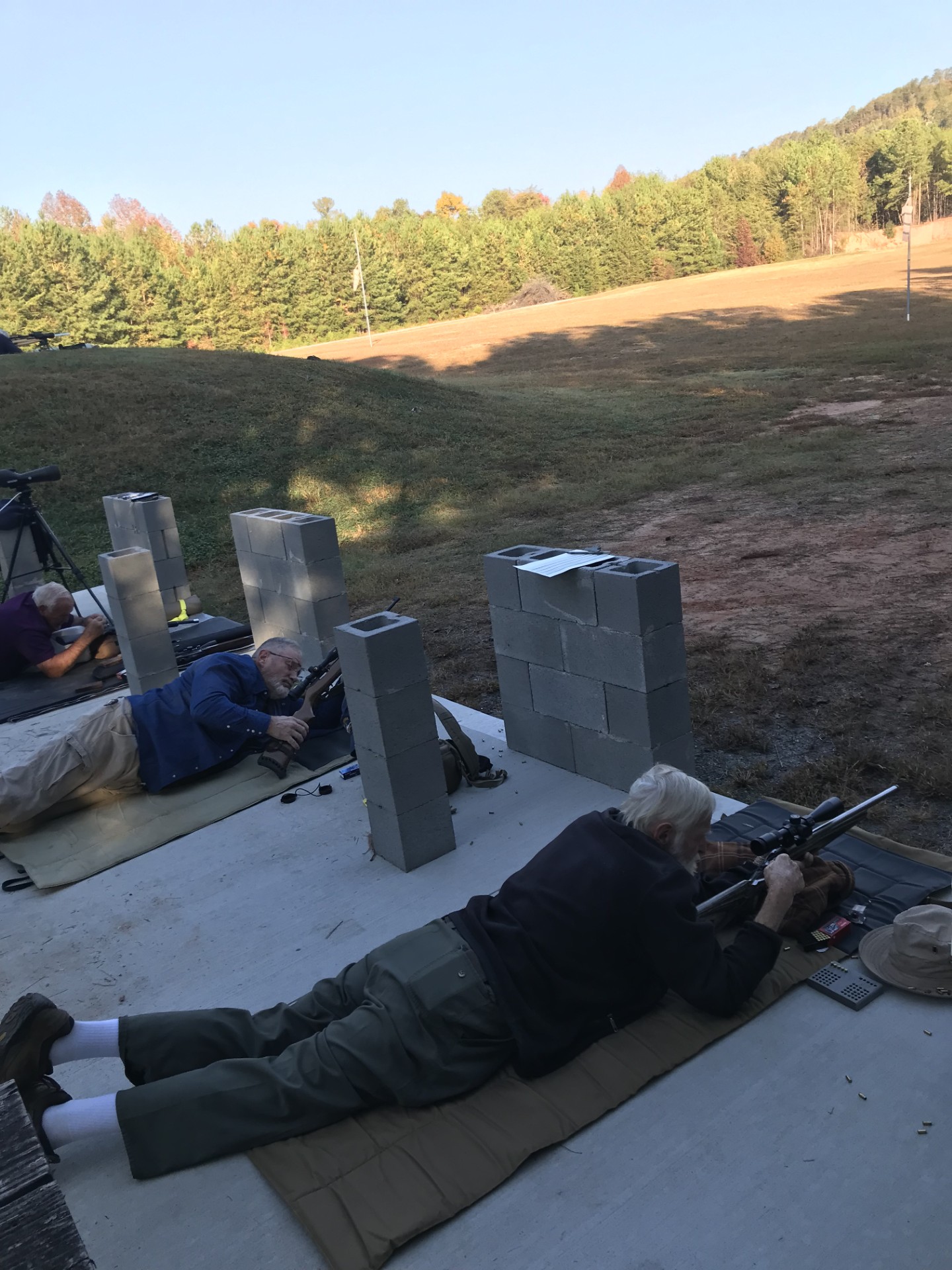
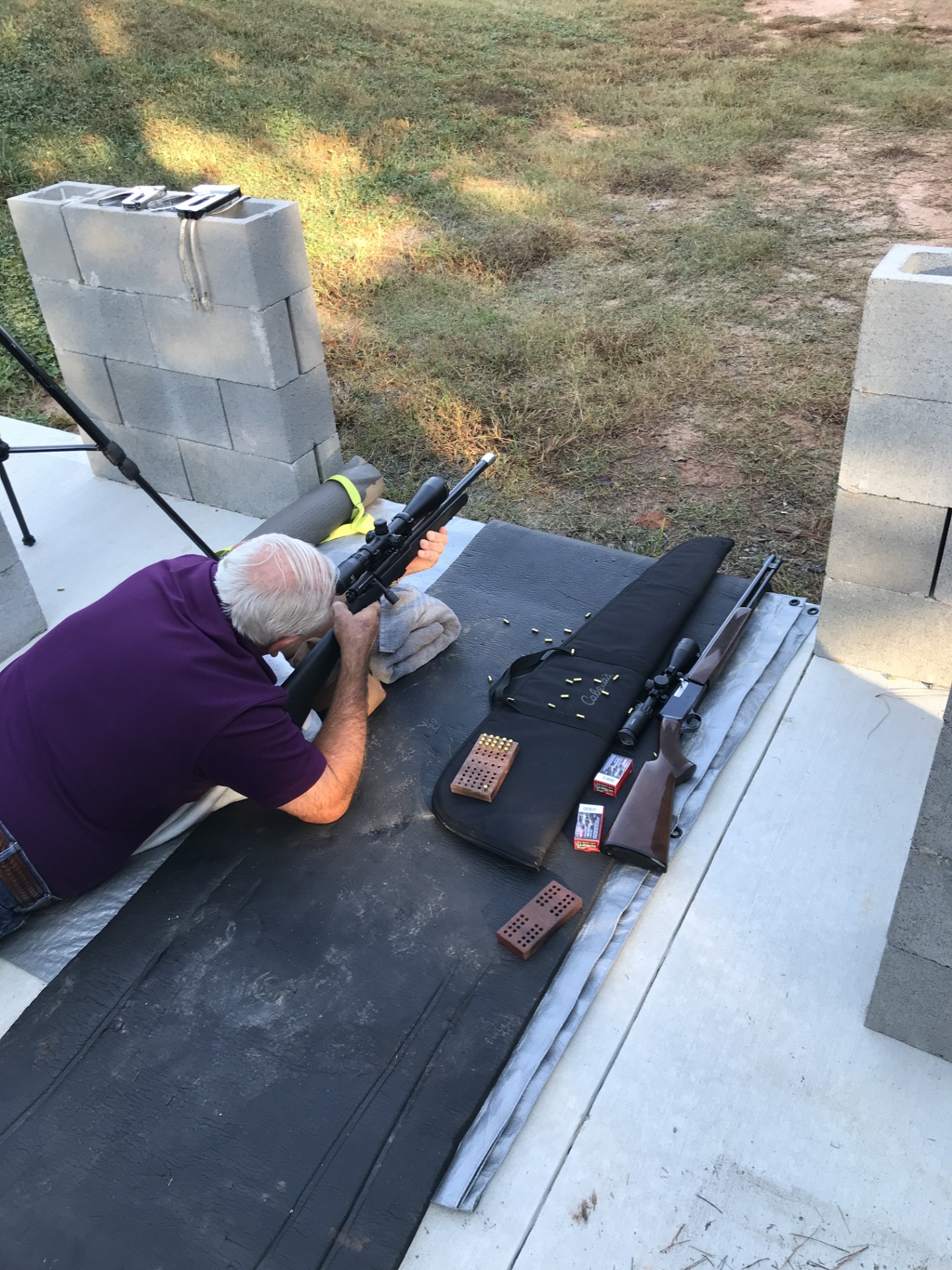
In late 2024, Polk County Gun Club began hosting monthly NRA Light Rifle competition. This competition is offered during the F-Class shooting season from April through October and is held on the fourth Saturday of the month in conjunction with the club’s monthly F-Class tournament. NRA Light Rifle competition is intended for sporter-type .22 rimfire rifles. It is deliberately designed to emphasize the light rimfire rifles that shooters are likely to have for plinking and small game hunting.
The Match
While the full NRA Light Rifle program at the National Matches includes position shooting (offhand, sitting and prone) the NRA Light Rifle event at PCGC is for prone shooting only.
In keeping with the NRA intention for this kind of competition, the PCGC NRA Light Rifle competition is shot outdoors at 50 yards using the NRA A-31 target. (This target has five “bulls.” The top bull is for sighters. Competitors must place five shots in each of the four bottom bulls to complete the 20-round course of fire for a match.)
A match consists of twenty rounds for record along with unlimited “sighter” shots. PCGC Light Rifle matches are shot in a block time of 25 minutes, allowing time for both the twenty record shots and all the sighters that competitors wish to shoot. The monthly program consists of a tournament of three sequential 25-minute matches. (Competitors may limit their participation to one or two matches but are encouraged to shoot all three to be eligible for monthly aggregate club awards.)
The equipment
This competition is restricted to rifles chambered in caliber .22 Long Rifle only. Rifles eligible for this competition weigh no more than 8.5 lbs with all permanent attachments. Trigger pull weight must not be less than 2.0 lbs. Slings are allowed but must be simple hunting or military-style with a width no greater than 1.25 inches. During shooting, the rifle may not be rested on a bag or other artificial rest – it must be supported by arms and shoulders only. Stocks may not have target-style butt equipment that extends beyond the contour of the stock: simple pads only. There is no restriction on action type, stock design, sights or scope power, although sights are counted against rifle weight. Rifles may be single loaded or magazine fed. Competitors may wear light shooting jackets with elbow and shoulder pads, but not hard-backed competition jackets.
Recognition and Awards
Scores shot in this event are forwarded to the NRA, which maintains competitor results and issues Light Rifle-Prone classifications: master (98+%), expert (96-97.99%), sharpshooter (94-95.99%) and marksman (less than 94%). An initial NRA Light Rifle classification requires 100 shots.
Polk County Gun Club also recognizes the top shooters in each monthly Light Rifle-Prone tournament by giving a club award for first, second and third place aggregate scores.
Match Administration
Shooting places on the firing line for NRA Light Rifle-Prone competitors are limited, so it is wise for prospective participants to contact the match director in advance in order to reserve a place.
The tournament itself starts with a safety briefing at 0900 with the first shot downrange at about 0910. The third (and final) match typically concludes at about 1100. Competitors should plan to arrive at the PCGC Rifle Range by 0800 to sign in and place their equipment on the firing line.
For additional information (or to reserve a place on the firing line) contact Match Director Dan Henk at phone (828) 440-1029 or e-mail: henkdan@hotmail.com.
Buffalo/Rimfire Vintage Rifle
Buffalo/Rimfire Vintage Rifle at PCGC
In 2020, Polk County Gun Club introduced a new rifle competition: Buffalo/Rimfire Vintage Rifle. This activity is intended to evoke the atmosphere, equipment, shooting skills and camaraderie of rifle competitions of a bygone era, offering both high power and small bore shooting options. Vintage Rifle competitions in 2022 will be conducted quarterly as Saturday morning events on 29 January, 30 April, 30 July and 29 October. Tournaments begin with a safety briefing at 0900. The first shot down-range is at about 0910. Two consecutive 20-shot matches then are held. The final match ends at about 1100. The award ceremony (the final event) typically is completed by about 1145. Competitors should plan to arrive no later than 0800 to register for the tournament and to place their equipment on the firing line.
Buffalo/Rimfire Vintage Rifle tournaments are conducted at the PCGC 300-yard range. Due to the limitations of space, the tournament can accommodate a maximum of forty buffalo rifle shooters, twenty mini-buffalo challenge shooters and twenty vintage rifle shooters, so it is important for prospective competitors to reserve a position in advance to be sure of a place on the firing line. It is likely that there will be enough space for shooters to participate in two matches if they so desire. Registration fee is $20 per match.
In each of these shooting options, a match consists of 20 shots for record on the designated target, along with unlimited “sighter” shots, all in a block time period of 25 minutes. The tournament features two relays (one match per relay) so it is possible to participate in up to two matches during the course of the tournament. Awards for match winners (first, second and third place) are specially-designed medals.
This competition offers the following options:
- Small Bore Benchrest. This option is for small bore rifles in calibre .22 Short, Long or Long Rifle in a model introduced prior to 1946. It is a 100-yard match fired on the NRA A-25 target and has two subclasses – iron sight and scope. Iron sights must be period-correct and appropriate to the model of the rifle. Scopes may be of any vintage, year or power. In each subclass, awards will be presented to first, second and third place high single match winners.
- Mini-Buffalo Challenge. This option is for small bore rifles in calibre .22 Long Rifle and is fired off of shooting sticks at 200 yards on a special bison target with scoring rings. Rifles must be of a single-shot design introduced prior to 1896 (not including bolt actions) or rifles judged by the Match Director to be of equivalent technology. The Mini-Buffalo Challenge has two subclasses: iron sight and scope sight. Iron sights must be period-correct to 1896 or earlier. Scope sights must be externally adjusted, having bodies no larger in diameter than ¾ inches and objective lenses no larger in diameter than 1-1/4 inches. In each subclass, awards will be presented to first, second and third place high single match winners.
- Buffalo Rifle. This option is for center fire “buffalo rifles” fired off of shooting sticks at 300 yards at a special bison target with scoring rings. Rifles must be single-shot or lever action with bore diameters of .375 inches or larger and of a model introduced prior to 1896 (but also allowing exact modern reproductions) and firing a cartridge available in 1896. There are two buffalo rifle subclasses: iron sight and scope. Iron sights must be period-correct to 1896 or earlier. Scope sights must be externally adjusted, having bodies not larger in diameter than ¾ inches and objective lenses no larger in diameter than 1-1/4 inches. In each subclass, awards will be presented to first, second and third place high single match winners.
For additional information or pre-registration, contact Tournament Chair Steve Bengston at: redoakfarm1@windstream.net (Phone: 864 612 9903)
CMP GSM Vintage Rifle
CMP GSM Vintage Rifle at PCGC
GSM is the acronym for Garand, Springfield, Modern Military and is listed in the Civilian Marksmanship Program (CMP) Rule Book as a “discipline” in this manner. A reason for the creation of this program was to initiate new shooters into the sport of high-power rifle competition.
Generally, Garand refers to a WWII era M1 rifle, Springfield to a WWI era M1903 rifle, and Modern Military to Vietnam era rifles.
Garand Springfield was the initial focus of the program but to be more “inclusive”, Modern Military became an “add-on” for those not fortunate enough to own the vintage WWI and WWII rifles.
Garand, Springfield, Modern Military matches are essentially a Service Rifle Match with shooting taking place from the standing and prone positions.
CMP GSM Vintage Rifle Winter League
Match Dates:
October 16th
November 20th
December 18th
January 15th
February 19th
All matches are open to the public, and new shooters are welcomed. Clinic attendees get quality instruction from a CMP-Certified instructor and a certificate of training to satisfy CMP purchase requirements. Match fees are $15 cash or check. Clinic instruction begins at 8am, match begins at 10am.
Participants need a rifle (serviceable M1 Garand, 1903 or 1903a3 Springfield, or any vintage US or foreign military rifle, CMP compliant modern military or unlimited M1), their own ammo (at least 35 rounds safe for your firearm), and hearing and eye protection.
A Wi-Fi enabled device to monitor shot locations/scores is also needed. Polk County Gun Club is fortunate to utilize the Silver Mountain Electronic Scoring System in our high-power rifle matches. Bringing your own tablet or using your phone is advised, however PCGC has "loaner" Kindle tablets. However, you may prefer to use your own tablet type device that may be larger for clarity.
Course of fire
Prone slow-fire - 5 sighting shots and 10 shots for a record in a time limit of 15 minutes (loading one round at a time).
Prone rapid-fire - 10 rounds fired in a time limit of 80 seconds. Shooters are required to stand and load 2 rounds for Garand with bolts closed on empty chambers (we will cover how to do this in the clinic) or 5 rounds for bolt actions with bolts remaining open. On the command to fire, shooters assume their prone position, shoot 2 or 5 rounds, and reload to finish the string.
Standing slow-fire - 10 rounds from standing position in a time limit of 10 minutes
Awards
CMP achievement pins of Gold, Silver, and Bronze will be awarded based on cut scores for each rifle category of Garand, Springfield, Vintage Military, and Modern Military (CMP Games Rulebook available here).
Oct, Nov, Dec, and Jan matches will be used for league aggregate awards of plaques for High Individual in each rifle, 3 Gun Agg, and League Agg using the best three scores. The February match is the "Frozen Chosin" Club Trophy Match.
Contact Greg Ficklin for more information at dgflick@msn.com or (864) 415-9561.

